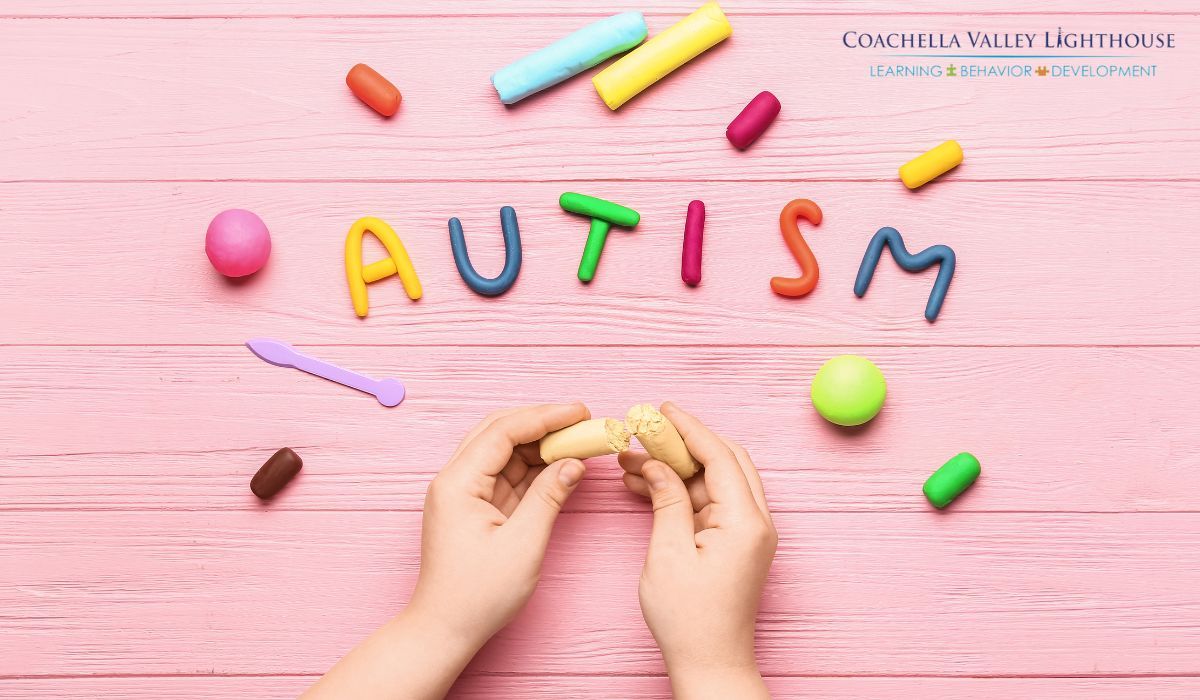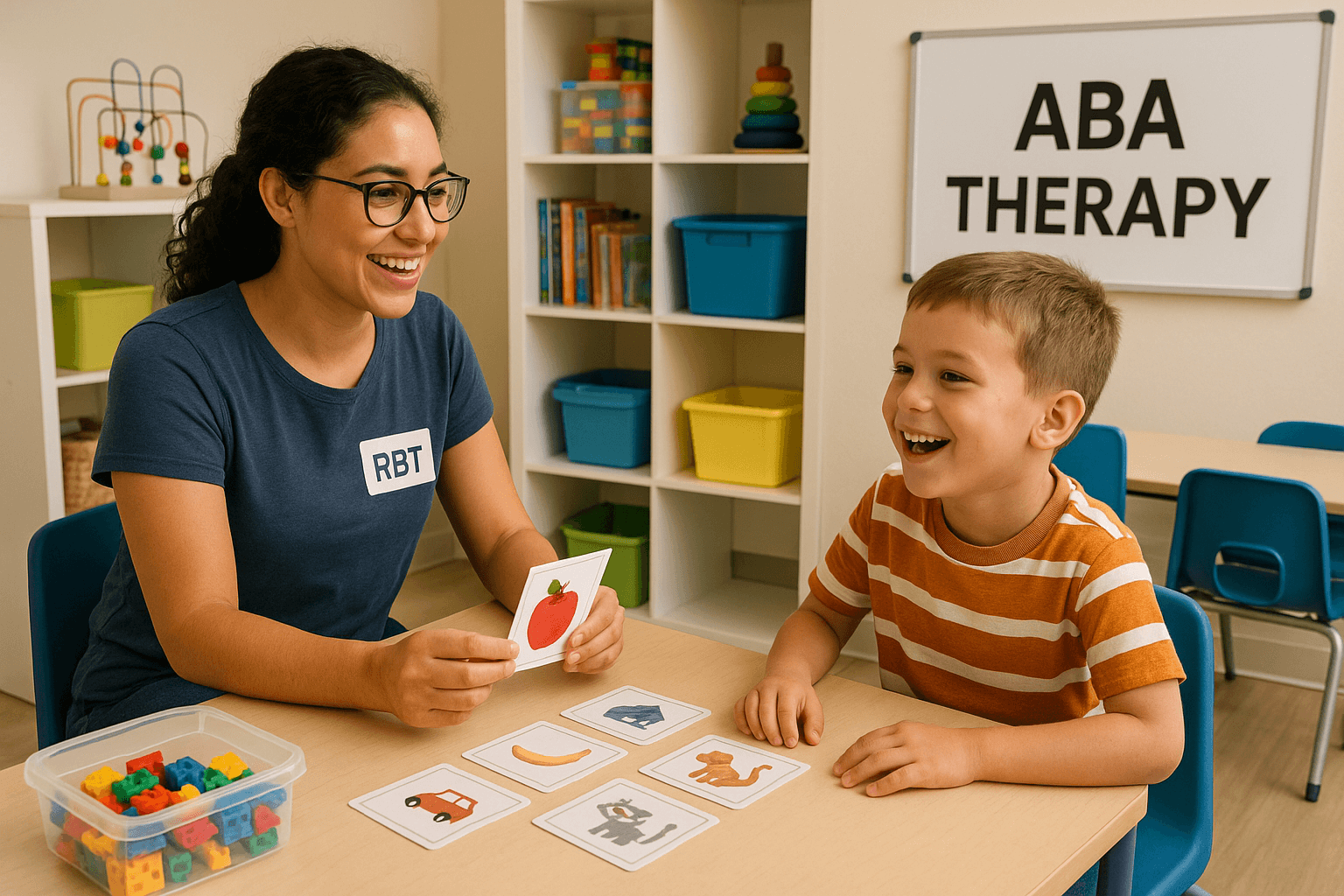The Link Between Autism and Anxiety: How Autism Treatment in Cactus City Can Help!
Autism is a complex neurological condition that affects millions of people worldwide.
One of the lesser-known aspects of autism is its connection to anxiety.
Today will investigate the link between autism and anxiety and how treatment in Cactus City is making a difference.
We'll break down this intricate topic into easy-to-understand sections, ensuring that you can grasp the nuances of this critical issue.
The Co-Occurrence of Anxiety in Autism:
Research indicates a high prevalence of anxiety among individuals with autism, with estimates suggesting that up to 40% or more may experience clinically significant anxiety symptoms.
The reasons behind this co-occurrence are multifaceted and involve a combination of biological, cognitive, and environmental factors.
Let's delve into the co-occurrence of anxiety in individuals with autism, exploring the multifaceted factors that contribute to this intersection:
Sensory Sensitivities and Overstimulation:
Individuals with autism often have heightened sensitivities to sensory stimuli, such as lights, sounds, textures, or smells.
Overstimulation from the environment can lead to increased stress and anxiety. Everyday stimuli that might be manageable for others can become overwhelming for individuals with autism.
Communication Challenges:
Core features of autism include difficulties in social communication, interpreting nonverbal cues, and engaging in reciprocal conversations.
Challenges in communication can lead to frustration, misinterpretation of social cues, and a sense of isolation, contributing to the development of anxiety.
Unpredictability and Routine Disruptions:
Many individuals with autism thrive on routine and predictability. Changes in routine, unexpected events, or transitions can be significant stressors.
The inability to predict and control the environment can lead to heightened anxiety, as individuals may struggle to cope with uncertainty.
Cognitive Factors:
Some cognitive factors associated with autism, such as repetitive thoughts or intense focus on specific interests, may contribute to anxiety.
Overthinking, fixation on certain topics, or difficulty shifting attention can amplify worries and fears, exacerbating anxiety.
Executive Function Challenges:
Difficulties with executive functions, such as planning, organizing, and problem-solving, are common in autism.
Challenges in these areas can make it challenging to navigate daily tasks and activities, leading to increased stress and anxiety.
Social Isolation and Peer Relationships:
Social difficulties in forming and maintaining peer relationships can contribute to feelings of isolation.
The desire for social connection may be present, but challenges in social interaction can lead to social anxiety and avoidance of social situations.
Cognitive Rigidity:
Cognitive inflexibility and a preference for sameness are common in autism.
Changes in plans or unexpected events can be distressing, and the need for predictability can contribute to anxiety when faced with uncertainty.
Bullying and Social Rejection:
Individuals with autism may be more vulnerable to bullying or social rejection due to differences in social behavior and communication.
Experiences of bullying or rejection can have a profound impact on mental health, contributing to the development or exacerbation of anxiety.
Intellectual Awareness:
As individuals with autism may have intellectual awareness of their differences, they might experience heightened self-awareness and potential anxiety about social acceptance.
The desire to fit in or navigate social expectations can contribute to anxiety in social situations.
Genetic and Neurobiological Factors:
Shared genetic and neurobiological factors may contribute to the co-occurrence of autism and anxiety.
Alterations in neurotransmitter systems and brain structures implicated in both conditions may play a role in their comorbidity.
Manifestations of Anxiety in Autism
The manifestations of anxiety in individuals with autism can vary widely and may present in unique ways due to the individual's sensory sensitivities, communication challenges, and cognitive styles.
Here's a more detailed elaboration on the common manifestations of anxiety in autism:
Social Anxiety:
Difficulty with Social Interactions: Individuals with autism may experience heightened anxiety in social situations due to challenges in interpreting social cues, understanding nonverbal communication, and navigating social norms.
Avoidance Behaviors: Social anxiety may lead to avoidance of social situations, isolation, or withdrawal from peer interactions.
Specific Phobias:
Intense Fears: Some individuals with autism may develop specific phobias, experiencing intense and irrational fears related to specific stimuli, situations, or activities.
Rigidity in Avoidance: The fear response may lead to rigid avoidance behaviors, impacting daily life and routines.
Generalized Anxiety:
Worry and Apprehension: Generalized anxiety involves persistent and excessive worry about various aspects of life, even in the absence of an immediate threat.
Physical Symptoms: Physical symptoms of anxiety, such as restlessness, muscle tension, and fatigue, may manifest.
Obsessive-Compulsive Behaviors:
Repetitive Behaviors: Individuals with autism may engage in repetitive behaviors or rituals as a way to cope with anxiety.
Need for Routine: The insistence on routines and rituals may serve as a means of creating predictability and control in the environment.
Meltdowns and Shutdowns:
Overwhelmed Responses: Anxiety may manifest as meltdowns (outward emotional expressions) or shutdowns (withdrawal and internalization) when individuals feel overwhelmed.
Triggers and Coping Strategies: Identifying triggers for meltdowns or shutdowns and implementing coping strategies is crucial for managing anxiety-related behaviors.
Communication Challenges:
Difficulty Expressing Anxiety: Due to communication challenges associated with autism, individuals may find it challenging to express their feelings of anxiety verbally.
Changes in Communication Patterns: Changes in communication patterns, such as increased echolalia or decreased verbal communication, may signal heightened anxiety.
Sleep Disturbances:
Insomnia or Irregular Sleep Patterns: Anxiety can disrupt sleep, leading to difficulties falling asleep, staying asleep, or maintaining a regular sleep schedule.
Nightmares or Night Terrors: Anxiety-related dreams or night terrors may contribute to sleep disturbances.
Regression in Skills:
Loss of Previously Acquired Skills: High levels of anxiety may lead to a temporary regression in skills, such as loss of language abilities or a decline in social engagement.
Difficulty Coping with Change: Major life changes or disruptions can exacerbate anxiety and contribute to skill regression.
Understanding the various manifestations of anxiety in individuals with autism is crucial for early identification and intervention.
Tailoring support strategies to address these specific manifestations can contribute to improved emotional well-being and a better quality of life for individuals at the intersection of autism and anxiety.
Regular communication with caregivers, educators, and healthcare professionals is essential for a comprehensive and collaborative approach to support.
Strategies for Support and Management
The strategies for supporting and managing anxiety in individuals with autism are diverse and often need to be tailored to the specific needs of each individual.
Here's a more detailed elaboration on the suggested strategies:
Sensory Accommodations:
Create Sensory-Friendly Environments: Minimize sensory triggers such as bright lights, loud noises, or strong smells.
Consider using soft lighting, noise-canceling headphones, or providing a quiet space where individuals can retreat if feeling overwhelmed.
Provide Sensory Tools: Offer tools like fidget spinners, stress balls, or weighted blankets to help individuals self-regulate their sensory experiences.
Social Skills Training:
Structured Social Skills Programs: Implement structured programs that teach specific social skills, such as making eye contact, interpreting body language, and engaging in conversations.
Role-Playing: Use role-playing scenarios to practice social interactions in a controlled and supportive environment.
Visual Supports:
Visual Schedules: Create visual schedules that outline the sequence of activities or events, providing predictability and reducing anxiety associated with changes.
Social Stories: Develop social stories—a personalized narrative that describes social situations—to help individuals understand and navigate specific social scenarios.
Cognitive-Behavioral Therapy (CBT):
Adapted CBT: Tailor traditional CBT techniques to accommodate the cognitive and sensory differences of individuals with autism.
This may involve simplifying language, using visual aids, and addressing specific cognitive patterns associated with autism.
Mindfulness Practices: Incorporate mindfulness techniques to help individuals become more aware of their thoughts and feelings, promoting emotional regulation.
Gradual Exposure:
Create a Hierarchy: Identify anxiety-provoking situations or stimuli and create a hierarchy from least to most anxiety-inducing. Gradually expose individuals to these situations in a controlled and supportive manner.
Reinforcement and Rewards: Provide positive reinforcement and rewards for facing and successfully navigating anxiety-provoking situations.
Individualized Strategies:
Understand Individual Triggers: Recognize and understand specific triggers for anxiety in each individual.
Tailor interventions based on their unique sensitivities and challenges.
Collaborate with Individuals: Involve individuals in the process of identifying and developing strategies that work for them. This empowerment can enhance the effectiveness of the interventions.
Collaboration with Professionals:
Multidisciplinary Approach: Engage a team of professionals, including psychologists, occupational therapists, and speech therapists, to create a comprehensive support plan.
Family and Caregiver Involvement: Include family members and caregivers in the support plan, ensuring consistency across different environments.
Medication Consideration:
Consultation with Healthcare Providers: In some cases, medication may be considered to manage anxiety symptoms.
Consultation with healthcare providers, including psychiatrists, can help determine if medication is a suitable option.
Conclusion:
In conclusion, understanding the intricate link between autism and anxiety is a crucial step toward providing effective support and enhancing the well-being of individuals within the autism spectrum.
By acknowledging the unique challenges they face, we can create environments that foster growth, independence, and happiness.
If you or someone you know is seeking support for autism-related challenges, consider reaching out to Coachella Valley Lighthouse.
With over 11 years of dedicated service, we specialize in Applied Behavior Analysis (ABA) therapy and psychological-educational assessments.
ABA therapy, the #1 recommended treatment for Autism Spectrum Disorder (ASD), is a cornerstone of our services.
At Coachella Valley Lighthouse, our mission is clear: to help every individual unleash their potential and live the most independent, happy, and fulfilling life possible.
We provide services to families in Riverside County, San Bernardino County, and Imperial County, offering both center-based and in-home ABA therapy services.
As a family-owned and clinician-run organization, we prioritize the quality of care we provide. With a 3:1 client to staff ratio, we ensure personalized attention and a swift, efficient pathway to therapy services.
Parents appreciate our commitment to avoiding long waitlists and the exceptional parent coaching and support we offer.
Become a part of the Coachella Valley Lighthouse family, where your child's well-being is our top priority.
Trust us to guide you through the challenges of Autism Spectrum Disorder.
For more information or to schedule an appointment, contact us today and take the first step toward unlocking your child's potential.
Frequently Asked Questions
What is the most common form of anxiety in autistic individuals?
The most common form of anxiety in autistic individuals is social anxiety. Many autistic individuals find social interactions challenging, leading to heightened tension in social situations.
How can I support a loved one with autism and anxiety?
Supporting a loved one with autism and anxiety involves understanding their unique needs and challenges.
Encouraging open communication, seeking professional guidance, and providing a structured and supportive environment can make a significant difference.
Can anxiety in autism be treated effectively?
Yes, anxiety in autism can be treated effectively. Specialized therapies and interventions tailored to the individual's needs can help manage and reduce anxiety symptoms.
Are there any natural remedies for anxiety in autism?
While natural remedies such as mindfulness techniques and dietary changes can be helpful, consulting with a healthcare professional to create a personalized treatment plan is essential.
What role do schools play in supporting autistic children with anxiety?
Schools play a vital role in supporting autistic children with anxiety.
They can implement strategies like providing a sensory-friendly environment, offering social skills training, and creating individualized education plans to meet the child's needs.
Is anxiety a lifelong struggle for individuals with autism?
Anxiety is not necessarily a lifelong struggle for all individuals with autism.
With early intervention and appropriate treatment, many autistic individuals can learn to effectively manage and reduce their anxiety symptoms, improving their overall quality of life.
Can autism treatment in Cactus City benefit individuals of all ages?
Yes, autism treatment in Cactus City is designed to benefit individuals of all ages, from young children to adults. Specialized programs are tailored to address the unique needs and challenges that each age group may face.
CV lighthouse provides ABA therapy to families in Riverside County, San Bernardino County, and Imperial County, offering both center-based and in-home ABA therapy services.
Are there any support groups in Cactus City for families of autistic individuals?
Yes, Cactus City offers various support groups and community resources for families of autistic individuals. These groups provide a valuable platform for sharing experiences, obtaining information, and connecting with others facing similar challenges.
How can I explain autism and anxiety to my child's classmates and friends?
Explaining autism and anxiety to your child's classmates and friends can be done in a simple and age-appropriate way. You can use children's books, videos, or visual aids to help them understand the differences and similarities between their friend with autism and themselves.
What are some practical strategies for reducing anxiety in autistic individuals at home?
Practical strategies for reducing anxiety in autistic individuals at home include:
- Establishing routines.
- Creating sensory-friendly environments.
- Incorporating relaxation techniques.
- Providing clear and consistent communication.
Tailoring these strategies to the individual's specific needs is essential for success.













